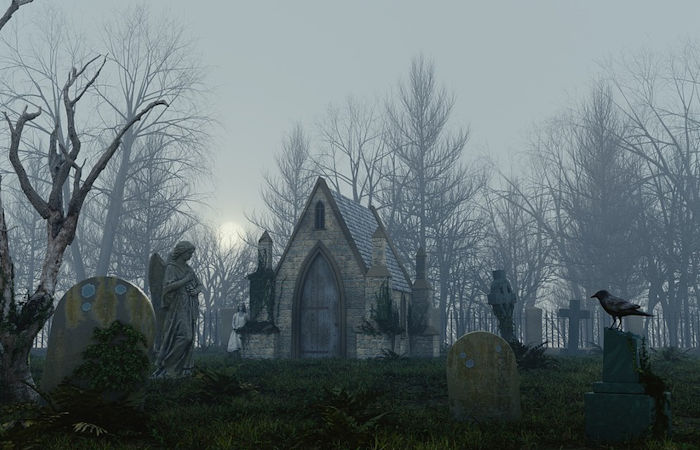Strange Tale Of Demonic Possession And Exorcism In 17th-Century New France – What Happened?
AncientPages.com - During the autumn of 1660, colonists in and around Québec started to report some very strange occurrences.
In the sky they saw a man enveloped in flame and a canoe of fire. In the air they heard lamentable cries and a thunderous, horrible voice. A teenaged domestic servant said that she was being terrified by demons.
Credit: Pixabay: clivetomkins9 - Public Domain
People who tried to chase the malevolent spirits away described phantasmal music as well as stones that detached themselves from walls and flew by themselves. The servant accused a miller of witchcraft. After showing signs of demonic possession, this servant was brought to the hospital where she was treated by nuns. The miller was imprisoned and later executed.
When people learn that my research examines these stories of demonic infestation, they often ask: But what was really happening?
My first answer is simple: I don’t really know. My next answer is better: Whether we believe the stories on a surface level or not, we can learn about the people who told them by asking historical questions.
Reason and historical sources
As a historian, I remain “professionally agnostic” about questions that cannot be answered using reason and the historical record: I accept that some things simply cannot be fully explained with the evidence I can access.
But a wise respect for the limits to our knowledge does not mean we cannot know anything at all.
Historical investigation is an exercise in trying to understand the past as best we can from the evidence that remains. As historians have shown with studies of witchcraft, demons and demonic possession, reports of supposedly supernatural phenomena provide valuable insight into past societies and our own time.
Everyday lives of ordinary people
The poor and humble are just as worthy of our attention as the rich and famous. “Ordinary histories” can be challenging to research, though, without sources by or about regular folk.
Barbe Hallay, the servant suffering from demonic torments in New France, could not read or write. The only thing we have in her own hand is the “marque” (a sign that she left in place of her signature) on her marriage contract.
People’s concern with demonic possession generated documents that allow us to know more about her life, with glimpses into her experiences as a servant in a manor house and a patient in a hospital.
Through the approach of microhistory, which looks up close at a small object of study in order to answer big questions, we can explore the deeper meanings and wider significance of her actions, and the actions of those around her.
How did colonists in New France make decisions? Their thoughts and deeds were shaped by the environment, as well as by ideologies of colonialism, class, gender and religion.
In studying how these forces influenced people in the past, we develop a clearer sense of how we too are subject to forces we might not control, or even perceive.
Seeing beyond the surface
Details of ordinary life appear almost accidentally in records of extraordinary occurrences. We can also consider these occurrences themselves to investigate a society’s underlying beliefs and assumptions.
Marie Regnouard was the seigneuresse (a female head of a seigneurie) at the estate where Hallay worked. She left a remarkable account of her efforts to end the demonic torments using a rib bone from a recently deceased Jesuit priest. This account labels her actions as a “deliverance,” a “relief,” and a “healing.”
Such words evoke health care, but the procedure itself resembles a ritual that Regnouard, as a lay woman, would not be expected to perform: an exorcism.
Exorcism, while controversial, has also become more mainstream in some Christian churches. Exorcism can cause real harm. In some cases, it may amount to a criminal offence.
Exorcisms were controversial in the past too. People struggled to discern the true causes of disruptive behaviour, and they disagreed about who was qualified to decide.
Pixabay: mollyroselee - Public Domain
For early modern people, an exorcism served functions beyond freeing someone from an evil presence. It demonstrated the power of the exorcist, and of whatever spiritual system that exorcist represented.
Why did Regnouard perform a ritual that was an exorcism in all but name? She demonstrated the fulfilment of her duty to care for members of her household (a responsibility widely acknowledged by those around her) and the authority to draw upon both medical and religious knowledge (domains that were contested, especially for women).
In looking beyond the labels of Regnouard’s account to the actions she performed, we remember to pay attention not only to what things are called, but also to what they mean.
Our demons, ourselves
We can study what frightens us to learn about ourselves. Just as the popularity of horror films today is probably a symptom of our cultural unrest, historical fears are signs of past anxieties.
French leaders had planned for New France to become a perfect society. With the establishment of the Compagnie de Nouvelle-France in 1627, the king and Cardinal Richelieu wrote that New France, with divine help and the example of good behaviour by colonists, would bring people to knowledge of the true God. A few years later, in the words of Jesuit priest Paul Le Jeune, it was to be “a new Jerusalem blessed by God, composed of citizens destined for heaven.”
The City of Québec and surroundings in 1691, from ‘Mémoires de l’Amérique septentrionale,’ Baron de Lahontan, 1728. BiblioArchives / LibraryArchives, CC BY
Then the settlers came to realize that Indigenous people would not simply assimilate to French norms as some back in France had arrogantly presumed, and trans-Atlantic migrants needed to compromise traditional beliefs and practices for new surroundings. They were isolated during much of the year and vulnerable to attack from other imperial powers and from Indigenous nations who were not allies of the French.
New France was precarious, and the colonists knew it. They did not know exactly if or when a final blow would fall. Such uncertainty can lead to deep anxiety.
What were the colonists expressing through their fears of a demonic infestation? Probably many things, with a core of insecurity in the colonial project and anxiety about the unknowable future of New France. In studying their fears of the supernatural realm, we can also learn about the more tangible world around them.
Written by Mairi Cowan, Associate Professor, Department of Historical Studies and Institute for the Study of University Pedagogy, University of Toronto Mississauga, University of Toronto
This article is republished from The Conversation under a Creative Commons license. Read the original article.
More From Ancient Pages
-
 The Carthaginians’ Secret: Mysterious Desert Land Or America Found By Mistake?
Ancient Mysteries | Jul 27, 2017
The Carthaginians’ Secret: Mysterious Desert Land Or America Found By Mistake?
Ancient Mysteries | Jul 27, 2017 -
 Knowledge Of Divine Alien Beings And High-Tech In Ancient Egypt Described In Sacred Books And Papyrus – Reincarnation, Cloaking Technology And Space Travel – Part 2
Ancient Mysteries | May 16, 2021
Knowledge Of Divine Alien Beings And High-Tech In Ancient Egypt Described In Sacred Books And Papyrus – Reincarnation, Cloaking Technology And Space Travel – Part 2
Ancient Mysteries | May 16, 2021 -
 Cyrus The Great Cylinder – Legacy Of The Ancients
Artifacts | Aug 25, 2015
Cyrus The Great Cylinder – Legacy Of The Ancients
Artifacts | Aug 25, 2015 -
 Food Insecurity Led To An International Conflict 2,000 Years Ago
Archaeology | Sep 22, 2022
Food Insecurity Led To An International Conflict 2,000 Years Ago
Archaeology | Sep 22, 2022 -
 The First Conservationists May Have Been Early Pacific Islanders Who Started The Practice 3,000 Years Ago
Archaeology | Sep 29, 2021
The First Conservationists May Have Been Early Pacific Islanders Who Started The Practice 3,000 Years Ago
Archaeology | Sep 29, 2021 -
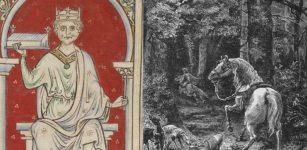 Was King William II Murdered In The New Forest?
Featured Stories | Aug 5, 2021
Was King William II Murdered In The New Forest?
Featured Stories | Aug 5, 2021 -
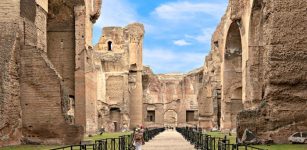 Baths Of Caracalla: Italian Antique Thermae Complex For Leisure, Gossip, Business And Socialisation
Featured Stories | Dec 4, 2023
Baths Of Caracalla: Italian Antique Thermae Complex For Leisure, Gossip, Business And Socialisation
Featured Stories | Dec 4, 2023 -
 Bes: Egypt’s Intriguing Dwarf God Of Music, Warfare And Protector Against Snakes, Misfortune And Evil Spirits
Egyptian Mythology | Jul 31, 2016
Bes: Egypt’s Intriguing Dwarf God Of Music, Warfare And Protector Against Snakes, Misfortune And Evil Spirits
Egyptian Mythology | Jul 31, 2016 -
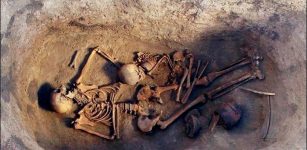 Mystery Of The Ancient Okunev Culture: Skeleton Of 4,500-Year-Old Noblewoman With Links To Native Americans Discovered In Siberia
Archaeology | Sep 9, 2016
Mystery Of The Ancient Okunev Culture: Skeleton Of 4,500-Year-Old Noblewoman With Links To Native Americans Discovered In Siberia
Archaeology | Sep 9, 2016 -
 Chonchon ‘Tue Tue’ Bird With Human Head Brought Bad Omens To Places It Haunted In Beliefs Of Mapuche Indians
Myths & Legends | Mar 12, 2024
Chonchon ‘Tue Tue’ Bird With Human Head Brought Bad Omens To Places It Haunted In Beliefs Of Mapuche Indians
Myths & Legends | Mar 12, 2024 -
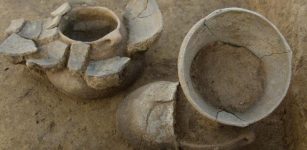 New DNA Study Links Early Europeans’ Cultural And Genetic Development Over Several Thousand Years
Archaeology | Aug 9, 2023
New DNA Study Links Early Europeans’ Cultural And Genetic Development Over Several Thousand Years
Archaeology | Aug 9, 2023 -
 Lost Ancient Extraterrestrial Knowledge And The Ignorance Of Modern Man
Ancient Mysteries | Jul 30, 2020
Lost Ancient Extraterrestrial Knowledge And The Ignorance Of Modern Man
Ancient Mysteries | Jul 30, 2020 -
 Does A Baffling Artifact Offer Evidence Of Ancient Extraterrestrial Visitation In New Zealand? – Experts Investigate – Part 2
Ancient Mysteries | Jul 23, 2020
Does A Baffling Artifact Offer Evidence Of Ancient Extraterrestrial Visitation In New Zealand? – Experts Investigate – Part 2
Ancient Mysteries | Jul 23, 2020 -
 Unpredictable Rainfall May Have Caused Disintegration Of Early Maya Societies
Archaeology | Apr 7, 2023
Unpredictable Rainfall May Have Caused Disintegration Of Early Maya Societies
Archaeology | Apr 7, 2023 -
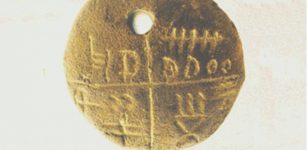 Controversial Tartaria Tablets: The First Writing System In The World?
Artifacts | Nov 13, 2014
Controversial Tartaria Tablets: The First Writing System In The World?
Artifacts | Nov 13, 2014 -
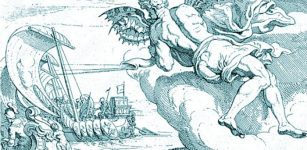 Powerful Winds In Ancient Beliefs
Featured Stories | Feb 5, 2024
Powerful Winds In Ancient Beliefs
Featured Stories | Feb 5, 2024 -
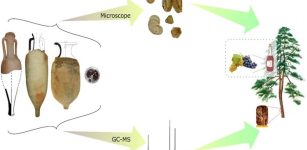 Underwater Jars Reveal Roman Period Winemaking Practices
Archaeology | Jun 30, 2022
Underwater Jars Reveal Roman Period Winemaking Practices
Archaeology | Jun 30, 2022 -
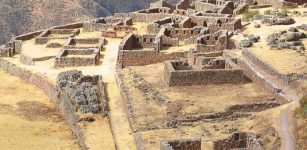 Beautiful Ancient City Of Pisac In The Sacred Valley, Peru – Incredible Inca Ruins
Featured Stories | Jun 22, 2017
Beautiful Ancient City Of Pisac In The Sacred Valley, Peru – Incredible Inca Ruins
Featured Stories | Jun 22, 2017 -
 Largest Viking-Age Building In Britain Has Been Found In Cumbria!
Archaeology | Feb 18, 2025
Largest Viking-Age Building In Britain Has Been Found In Cumbria!
Archaeology | Feb 18, 2025 -
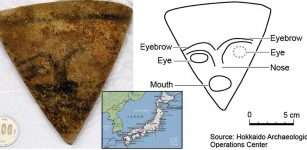 Jomon Period: Triangle-Shaped Stone Artifact Depicting Human Face Found For The First Time In Japan
Archaeology | Dec 25, 2017
Jomon Period: Triangle-Shaped Stone Artifact Depicting Human Face Found For The First Time In Japan
Archaeology | Dec 25, 2017

